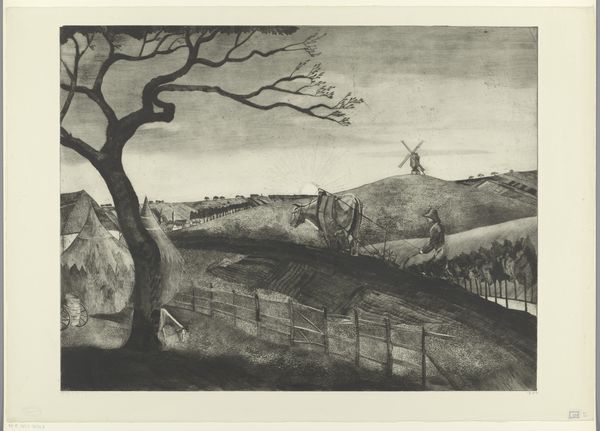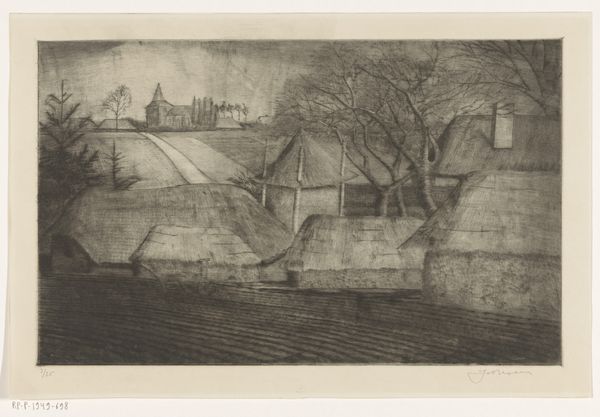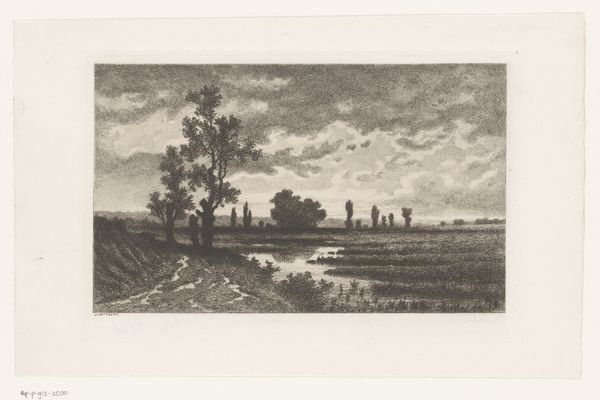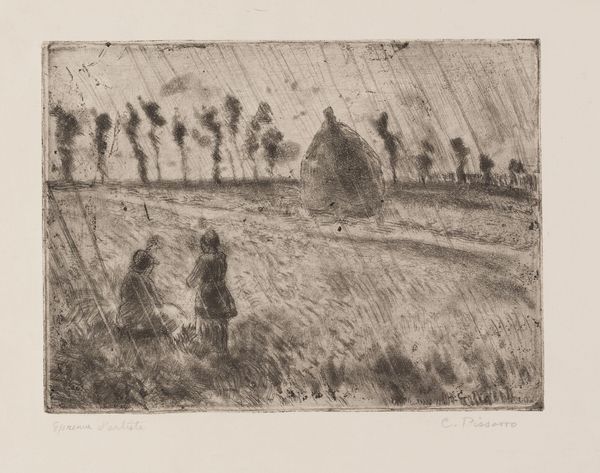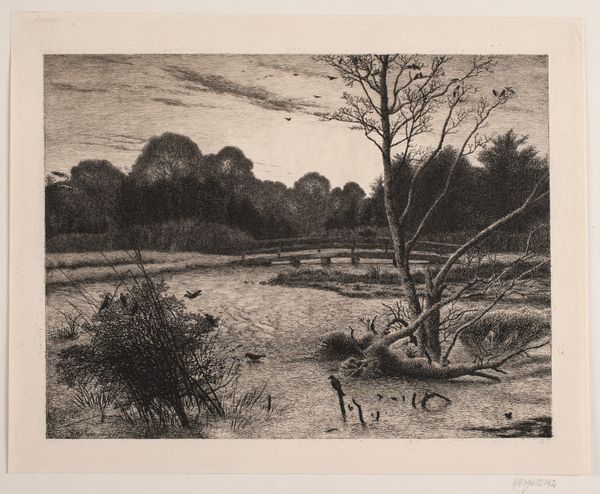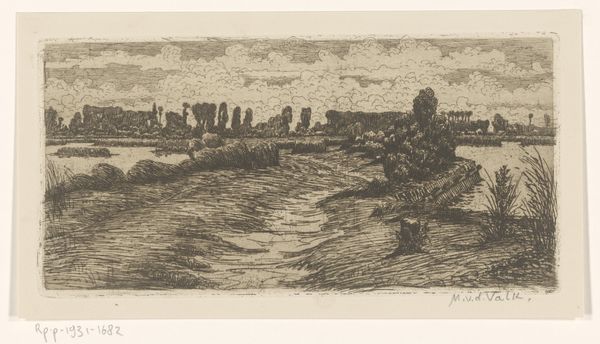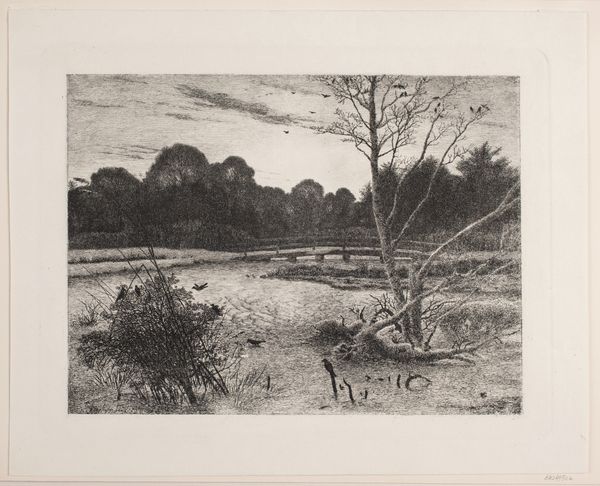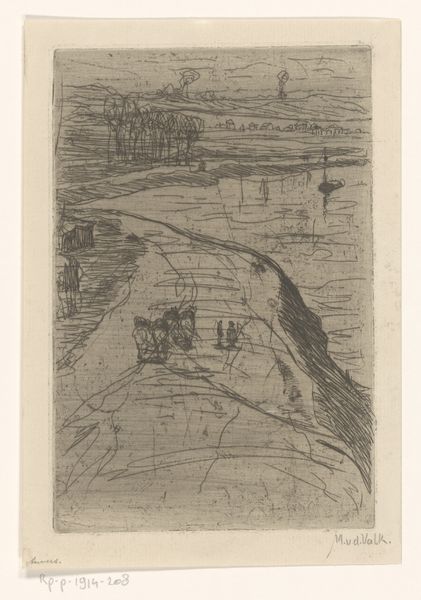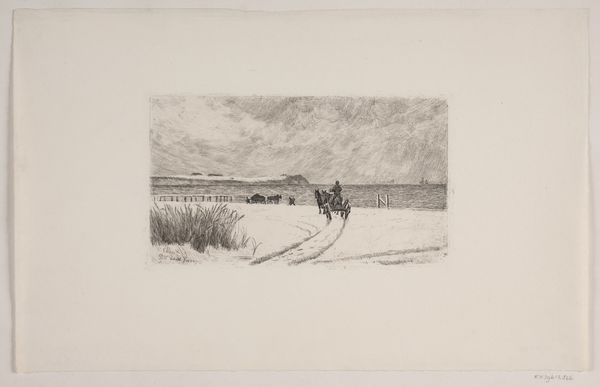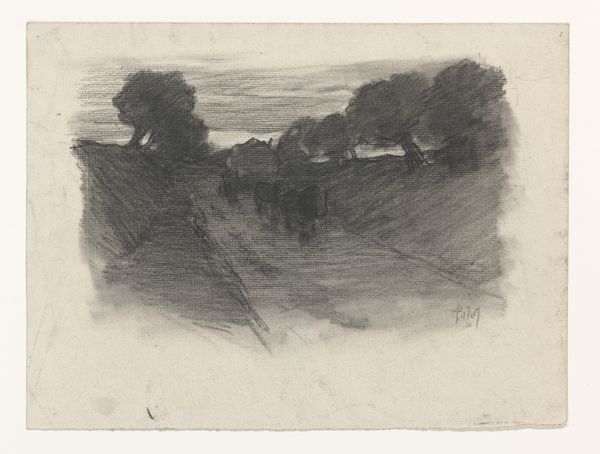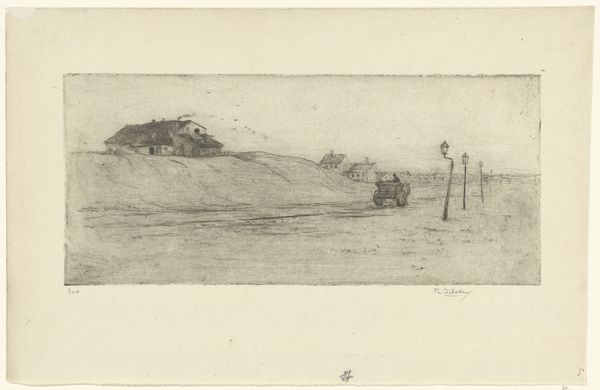
print, etching
#
pencil drawn
# print
#
etching
#
pencil sketch
#
landscape
#
pencil drawing
#
pencil work
#
genre-painting
#
realism
Dimensions: height 146 mm, width 199 mm, height 170 mm, width 220 mm
Copyright: Rijks Museum: Open Domain
Curator: Here we have Jo Bezaan's 1931 etching and pencil work, titled "Ploeger," residing here at the Rijksmuseum. Editor: My initial impression is one of stark rural labor—the vast, plowed field dominates, making the lone figure of the farmer feel almost dwarfed by the land itself. There's a quiet dignity here, wouldn't you agree? Curator: Undeniably. Look at the precise, almost regimented rows etched into the field. It's a study in line and texture; the varying densities of hatching create a tactile surface, conveying the roughness of the earth and the sheer effort involved in cultivating it. Editor: And the horse too, isn’t it striking? It feels like a symbol of tireless service. Horses are tied to narratives of agricultural societies—they represent power, certainly, but also a connection to ancestral farming techniques. Curator: Precisely. The way Bezaan uses light and shadow – observe the area around the horizon in stark contrast with the field – emphasizes the planar recession. He is really highlighting a deep pictorial space using limited tonal range. The windmill in the background feels intentionally positioned to mirror the horse's tireless, circular motion. Editor: Yes, those archetypal forms serve as grounding cultural markers: windmill and church; tilled soil; beast of burden— they anchor the modern viewer to a timeless past, even if a potentially idealized one. It speaks to something inherently human, doesn’t it, the constant striving against the elements. Curator: Certainly the geometric rigor juxtaposed with the organic curves, and the use of etching and drypoint, shows Bezaan skillfully balances representation with abstraction; the surface is not just descriptive, it is actively working to construct meaning through its very materiality. Editor: It's a potent image, reflecting on human resilience amidst the grandeur—and demands—of nature. One cannot help but feel contemplative observing this artwork. Curator: Yes, it prompts an analysis of compositional structure alongside its potential cultural implications.
Comments
No comments
Be the first to comment and join the conversation on the ultimate creative platform.
